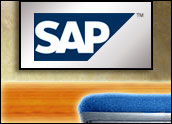
While sitting through technically complex webinars and presentations this week, I felt like raising my hand and saying, “May I be excused? My brain is full.” Seriously, the level of technology and adroitness of world-class demo jockeys is both impressive and intimidating. Compound this with bonding between engineers of different nationalities and platform allegiances, and you have the makings of a remix for “We Are the World” sung by programmers ignited by a common spark.
I’d keep an eye out for that album; it will be the one with the separate karaoke track featuring bouncing Java, Linux, Microsoft, SAP and Oracle logos dancing to the beat. Now that’s innovation!
In the fifth hour of a product session where I wasn’t sure if the engineer presenting loved his kids more than the product (or vice versa), the thought hit me like a two-by-four across the forehead: “So where is this company’s customers’ passion for all this technical elegance?”
Shrinkage, Software Style
During the session it was clear why this company isn’t selling very much of this solution. They’re talking pure technology and maybe 5 percent of their total available market gets it. Call it shrinkage, software style. By talking in terms of pure technology to impress and bond with other engineers, even on sales calls, this company was shrinking its market by large multiples. The deeper into the pure technology the company got, the smaller the market got.
I think many people respect an analytically elegant software application and a creative, aggressive development organization that is hell-bent on turning vision into reality. Those teams are worth their weight in gold. CRM as an industry needs more of these; they create momentum in organizations and are directly responsible for keeping this industry as vibrant as it is. For any CRM or enterprise software vendor, a fulfilled roadmap is the strongest Valentine’s Day aphrodisiac there is for peace to break out between engineering, marketing and sales.
Growing a Process First, Marketing Second
What makes enterprise software marketing so difficult is that marketers need to be able to decipher the technical engineering jargon and then translate all those details into business process benefits and payoffs. Taking the myriad of features, conditions, alerts, platform flexibilities and development advances and turning them into business process maps is where true differentiation and value is created and exists.
Owning the process first, and building out steps in that business process, is critical. Think of engineering as the discoverer of points of interest on a landscape and marketing building the roadmap for prospects, customers and users to find them. The thread of value has to be weaved by marketing into business process maps for the variety of features, functions and specific characteristics of applications to make sense.
These process maps aren’t best practices — they’re simply a suggestion of how to apply the applications’ features to a business problem. The mapping of product features to what matters most to prospects, customers and users creates markets — features don’t. While entire companies live in the comfort zone of creating applications and betting their futures on features, their marketing departments have to figure out how to package them and create process maps that make sense to line-of-business users.
If all this sounds like a lot of work to create value around the pure innovation of software, it is. For any CRM application to be successful, the company has to resolve to own the process first, and define the product second. Owning the process means knowing the unmet needs of prospects, customers and users, but most importantly, what and where the process is headed in the future. No business process, whether channel management, pricing, compliance or service, stands still.
Staying Relevant
Marketing organizations that know how to weave a strong story around business processes by working in product features deserve respect. It’s not easy to stay on top of any given process, such as managing contracts and compliance, let alone anticipate where that process is going and what applications are needed. But the best companies are doing this — and growing their markets in the process.
Louis Columbus, a CRM Buyer columnist, is a former senior analyst with AMR Research. He is the author of several books on making the most of analyst relationships, including Best Practices in Analyst Relations, which can be downloaded for free.
















































